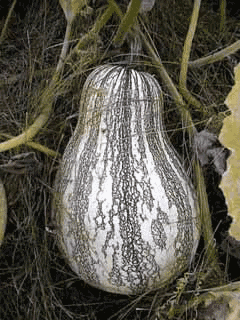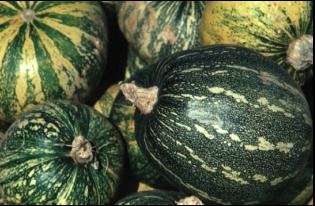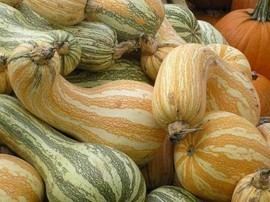Rank Species | Higher classification Squash | |
 | ||
Similar Squash, Figleaf Gourd, Crookneck pumpkin, Cucurbits, Loroco | ||
Winter squash cushaw cucurbita argyrosperma calabaza zapallo pumkin plant english version
Cucurbita argyrosperma, also the Japanese pie pumpkin or cushaw pumpkin, and silver-seed gourd, is a species of winter squash originally from the south of Mexico. This annual herbaceous plant is cultivated in the Americas for its nutritional value: its flowers, shoots, and fruits are all harvested, but it is cultivated most of all for its seeds, which are used for sauces. It was formerly known as Cucurbita mixta.
Contents
- Winter squash cushaw cucurbita argyrosperma calabaza zapallo pumkin plant english version
- Calabaza zapallo pumkin winter squash cushaw cucurbita argyrosperma plant spanish version
- Description
- Food
- Medicinal properties
- References

It is a Cucurbita species, with pumpkin varieties that are commonly cultivated in the United States as part of the Eastern Agricultural Complex and Mexico south to Nicaragua. Of all the cultivated Cucurbita species it is the least found outside the Americas. It originated in Mesoamerica and its wild ancestor is Cucurbita sororia. It is also closely related to Cucurbita kellyana and Cucurbita palmeri.

Calabaza zapallo pumkin winter squash cushaw cucurbita argyrosperma plant spanish version
Description

The flowers are orange or yellow and bloom in July or August. The plant grows about 1 foot high and spreads 10–15 feet. It likes well drained soil and has both male and female flowers. Fruits can weigh up to 20 pounds. It is often found in close proximity to Cucurbita moschata.
Food
The flowers, stems, shoots, and unripe fruits of the plant are consumed as vegetables. In the south of Mexico, the wild, more bitter varieties are used in this same way, once washed and cleaned to eliminate cucurbitin. The ripe fruit is grilled to make pies or used to feed animals. The seeds yield an edible oil.
The plant's adaptation to warm climates, and a resistance to squash borers, make it very competitive in the agricultural industry. It is used especially in the southern states of the U.S. for use in pies, preferred over other pumpkins by some cooks.
It is also grown in the Sonoran Desert region of the Southwestern United States and Northwestern Mexico by native peoples, especially the Tohono O'odham, where it is especially prized when immature as a summer squash.
Medicinal properties
Cucurbita argyrosperma also has medicinal properties. A liquid emulsion of its seed can act as a vermifuge, and the subsequent use of a laxative can effect an expulsion of parasitic worms.
Another medicinal use of Cucurbita argyrosperma is that of the flesh, which can be used for burns, eczema, and promoting lactation in nursing women.
